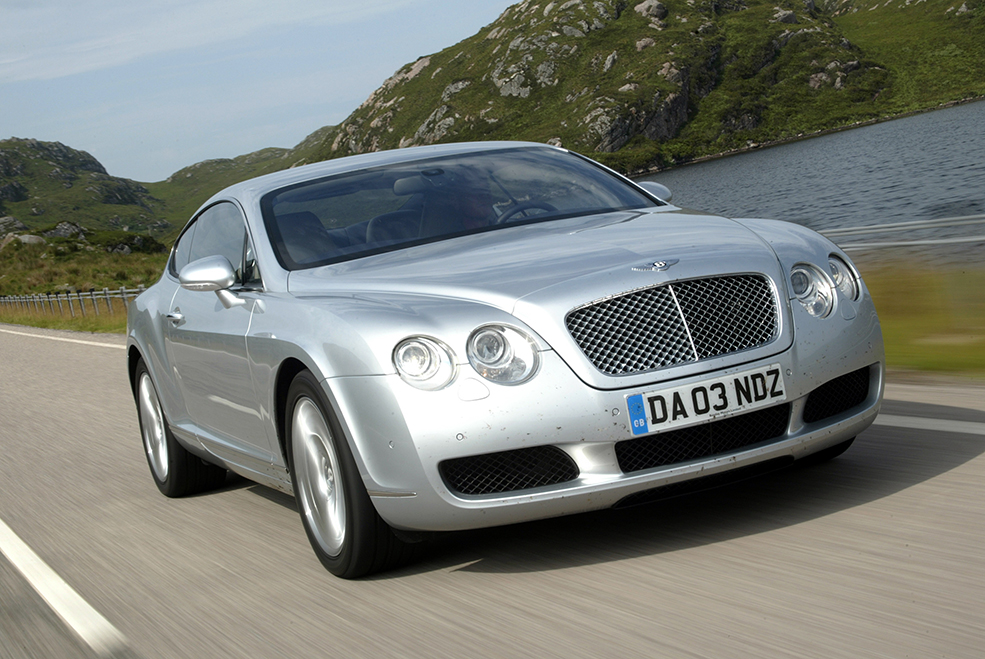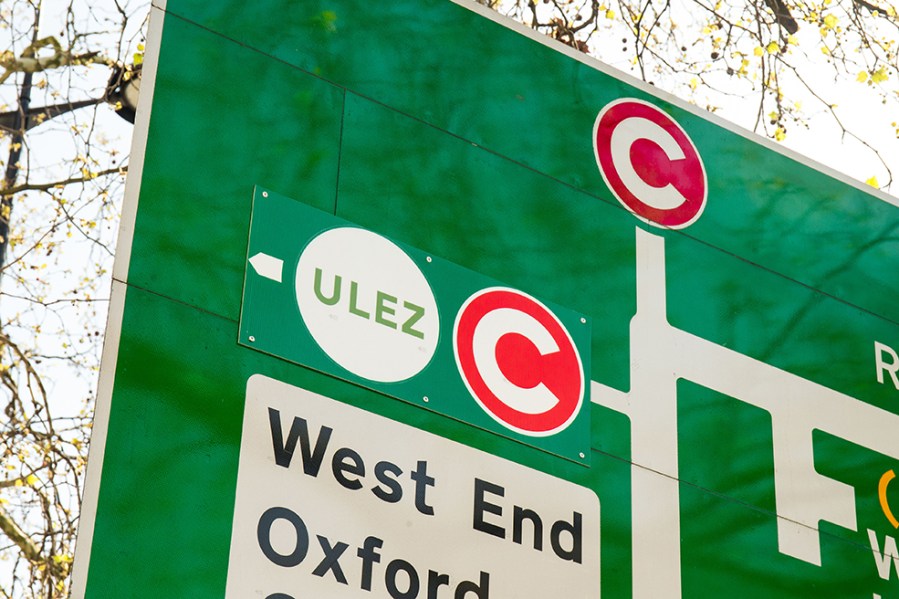With the expanded Ultra Low Emission Zone set to cover every London borough within the M25, enthusiasts fear the loss of many older vehicles by next summer
Words: Paul Guinness
The Ultra Low Emission Zone (ULEZ) is set to cover every London borough by next summer, it has been confirmed – with the move set to impact large numbers of older-car owners living within the affected area, raising fears that modern classics could end up scrapped as a result.
The move by London Mayor, Sadiq Khan, means the current zone – which was expanded last year to cover all areas within the North and South Circular roads – will move to the boundary of the current Low Emission Zone (LEZ) from August 29, 2023, although the M25 will not be covered.
It means only cars that meet strict emission requirements will be allowed to enter London areas without incurring the ULEZ charge. Petrol car compliance will start with Euro 4 models (registered after January 1, 2006), while for diesels it’s Euro 6 (post-January 1, 2016). Vehicles that don’t comply will have to pay £12.50 per day to drive within the new ULEZ area, which will operate 24 hours a day, every day of the year except Christmas Day.
Although classic vehicles over 40 years of age and registered as Historic are exempt from paying ULEZ charges, there are concerns that younger classics – some of them with relatively low values at present – will end up scrapped.
One young enthusiast who has done more than most to help owners of modern classics already affected by the current ULEZ is Jude Currie, who’s been using social media to find good homes for many cars of the 80s and 90s that might otherwise be scrapped. Commenting on Facebook about the latest ULEZ expansion, Jude said: “This includes areas which fall into Surrey, Hertfordshire, Essex and Kent. As we all found out from the last extension to the North and South Circular roads, a lot of great cars were scrapped. Don’t forget, Greater London is an area which has so many amazing 80s and 90s vehicles – more so than most other parts of the UK.”

Cars over 40 years old are still exempt from the ULEZ charge.
Jude added that many owners of such vehicles don’t realise their cars are becoming rare: “They will just scrap them when they’re told they can no longer use them without paying £12.50.” He’s therefore offered to leave notes on the windscreens of affected modern classics within the new ULEZ, in the hope of linking up their owners with prospective buyers: “As I found out [with the] last extension, a lot of owners are happy to let their cars go for very little money so they don’t have to scrap them.”
Meanwhile, other enthusiasts concerned about the effect of ULEZ expansion on older vehicles have also taken to social media, forming a group that’s hoping to connect buyers and sellers of vehicles that might otherwise be disposed of. To join the group, search ‘ULEZ Expansion – Classic Cars For Sale’ on Facebook.
Figures recently released by Transport for London (TfL) show that between November 2021 and June 2022, an average of 1.9 million journeys were made into the current ULEZ area each month, although roadside pollution levels have apparently reduced by 44 per cent in central London and 20 per cent in inner London.
Alex Williams, TfL’s chief customer and strategy officer, commented: “Expanding the ULEZ is vital for public health in this city. We know there are more deaths that are attributed to toxic air in the city’s outer boroughs and that bringing in these world-leading standards over a larger area will see millions more breathing cleaner air.”
A £110 million scrappage scheme has been announced, to allow those living within the expanded ULEZ to get money towards a compliant car.
Meanwhile, the planned extension of London’s ULEZ system has been the subject of discussions between the Historic & Classic Vehicles Alliance (HCVA) and TfL. The HCVA’s CEO, Garry Wilson, wants to see the age of classic vehicle exemption lowered within the ULEZ: “Representations have been made on this point, with the fallback being cars over 30 years being allowed. It remains to be seen if these responses will be taken on board. We will, of course, continue to engage on these matters.”
The HCVA has requested that TfL reviews the age cut-off for older vehicles, suggesting that many of today’s modern classics – cars that are typically between 15 and 30 years old – are used primarily as hobby and leisure vehicles, cover low annual mileages and therefore represent little threat to London’s air quality.
Are you likely to be affected by the announcement of the ULEZ expansion? Do you live within the new boundary, or regularly visit it in a modern classic? Tell us your story at ccb.ed@kelsey.co.uk
ULEZ anomalies
Words: Paul Wager
The growth of low emissions zones in British cities has had some significant effects on the old car hobby. Most such schemes allow cars in the Historic taxation class to escape the charge, the effect on modern classics has been significant.
The most recent expansion of the London Ultra Low Emission Zone (ULEZ) has made many interesting older cars uneconomic to own inside the zone, but for a significant number of cars the issue is less clear-cut – and this looks set to continue with the next expansion of the zone.
Low emissions schemes are generally operated on the basis of a car’s emissions, but standards were adopted at different times by different car makers – and as new standards were introduced they didn’t become mandatory until some time after.
For example, the first Euro 4 approvals were performed in January 2005, yet it didn’t become mandatory for all new registrations until January 2006. Plus, as we’ve discovered, there can even be discrepancies between different examples of the same model of the same age.
This means for example that the mighty 6.0-litre W12-engined Bentley Continental GT can purr in and out of the ULEZ scot-free, whereas a 3.0-litre Jaguar X-Type is charged £12.50 for the privilege. Meanwhile, the Jag’s 2.5-litre sibling gets in for free, despite the bigger-engined model in theory meeting the same emissions standard.
With the charge being based on emissions, the slightest variation in specification can make the difference: bigger wheels on a sports option, an automatic box or a different engine management system.

Confusion around historical emissions standards mean a 6.0-litre Continental GT is ULEZ-exempt, while many smaller-engined cars are not
So can you have a much-loved classic recertified to squeak under the emissions barrier? Well, if it has just two wheels then yes: for £175 the sole accredited testing centre will certify a motorbike’s emissions and the result will be accepted by Transport for London. The emissions zones are based on nitrogen oxide (NOx) emissions and apparently many older bikes which don’t have even a Euro category printed on their V5C in fact produce lower NOx emissions than the Euro 3 standard required for bikes. Of the bikes tested, many late ’90s models have passed and the oldest is a 1986 two-stroke Yamaha.
Sadly only the bike tested gets the exemption, rather than the entire population of that type and the system doesn’t operate for cars. Yes, it’s likely that there are many older cars which similarly can beat the required NOx standards but in order to have a car’s emissions certified, the only option would be a full emissions test to the level used by car makers in a Type Approval process which would clearly be too costly for a private owner or even a big club.
There’s also a disparity between different emissions zones, with London’s ULEZ and the Clean Air Zones (CAZ) elsewhere operating to different standards. For example, our much-loved Jaguar XJ8 is liable for the London ULEZ charge and the Birmingham CAZ, yet a 2003 Honda S2000 is chargeable in London but exempt in all the other schemes despite only being certified to Euro 3. A 2001 MGF certified to Euro 3 produces 0.079g/km NOx which actually meets the stricter Euro 4 standard, whereas the May 2003 data certifies the same car to Euro 3 but lists 0.1g/km, making it liable for the emissions charge.
The CAZ and ULEZ schemes require petrol cars to meet Euro 4 (2005) and diesel cars to meet Euro 6 (2014), which requires NOx emissions of 0.08g/km for both diesel and petrol but permits only 0.0045g/km of particulate emissions (soot) for the diesels.
It’s also not helped by pre-2001 cars not having NOx emissions listed on the V5C document, since separate NOx measurement wasn’t required until the adoption of the Euro 3 standard from January 2001.
The advice then to anyone buying a modern classic from the early 2000s and hoping to use it in a ULEZ or CAZ zone is not to rely on any published emissions figures for that model or to rely on its emissions standard – use the online checks to be sure.







